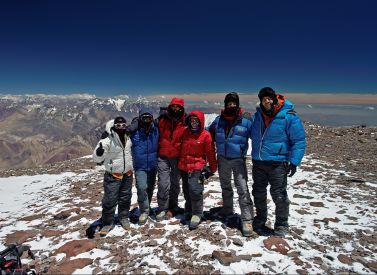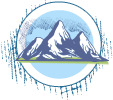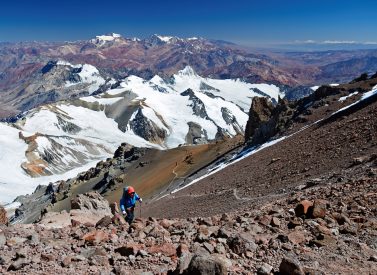Fascinating Facts About Mount Aconcagua
 by Tom Shearman on 20th September, 2022
by Tom Shearman on 20th September, 2022
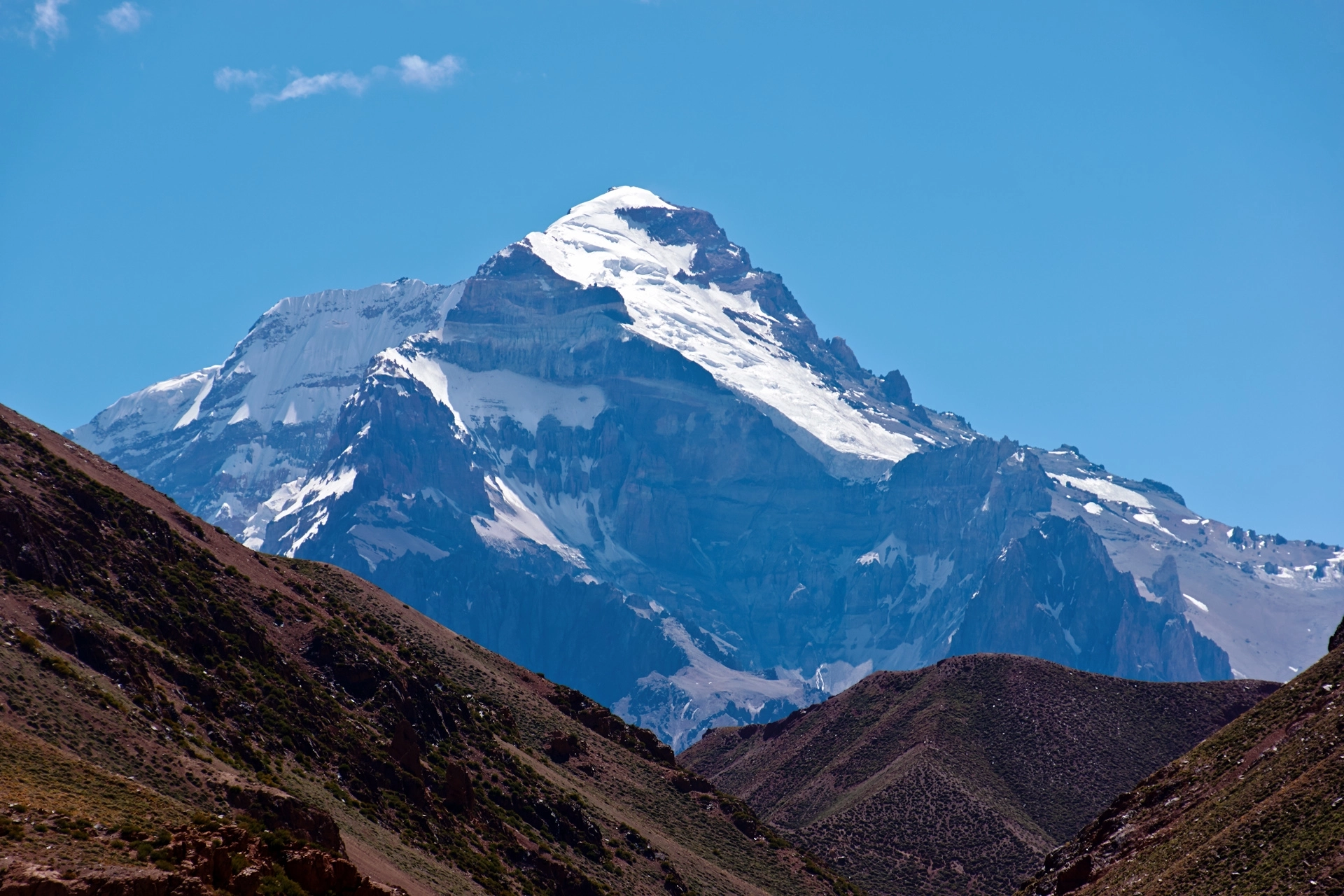
Mount Aconcagua towers over Argentina and Chile from its location close to Mendoza.
Standing at 6,961m/22,838ft, Aconcagua claims several lofty titles: the highest peak in South America, the tallest in all the Americas, and the highest mountain outside Asia.
Aconcagua is part of Aconcagua Provincial Park, and its formidable climbing challenge has attracted adventurers for decades. It’s now one of Argentina’s prime trekking and mountaineering attractions.
Let’s learn some fascinating facts about Mount Aconcagua.
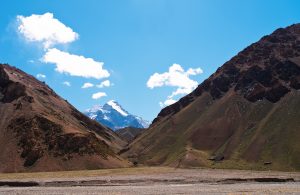
Where Is Mount Aconcagua?
Aconcagua is around 70 miles (112km) northwest of the Argentina city, Mendoza, a renowned wine-producing region.
It lies just 10 miles (16km) from Argentina’s border with Chile among what is known as the Principal Cordillera, or the Southern Andes Mountains. If you look at a map, you’ll see Aconcagua is very close to Chile’s capital, Santiago. Indeed, the western flanks of Aconcagua rise from the Chilean side.
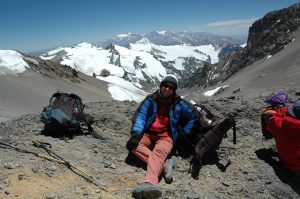
What Is the Origin of Mount Aconcagua’s Name?
Aconcagua is an extinct volcano whose name may originate from the Quechua Ackon Cahuak, which means “Sentinel of Stone.” Some think its name derives from the Quechua phrase Anco Cahuac, which translates as “White Sentinel.”
The Incas revered mountains, and Aconcagua was no different. In 1985, the mummified remains of a child were found on the mountain at 5,167m/16,952ft, one of the highest historical Inca sacrificial sites ever uncovered.
How Was Mount Aconcagua Formed?
Mount Aconcagua was originally one of several volcanoes that bordered a shallow sea.
Its modern-day formation began millions of years ago when the Nazca Plate started to slip underneath the South American Plate. Eventually, Aconcagua was lifted from its volcanic root to become the mountain we recognise today. Geologists have tracked Aconcagua’s history thanks to a mix of volcanic rocks and marine deposits found on its flanks.
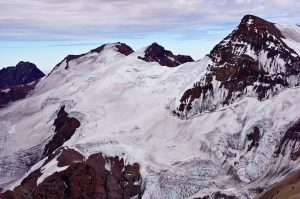
What Are the Mountaineering Features of Aconcagua?
Most people visiting Aconcagua attempt to reach its summit, though shorter, three-day trips can take walkers to see its impressive south wall.
Aconcagua is surrounded by the Valle de las Vacas (literally cow valley) to its east and north. The Valle de Los Horcones (pitchfork or forked valley) wraps around the mountain to the west and south.
There are several glaciers, too:
Ventisquero Horcones Inferior glacier is around 6 miles (10km) long and spreads down Aconcagua’s south face close to the trekker’s campsite, Confluencia.
The most well-known is the Polish Glacier, which lies on the northeastern side of Aconcagua. This is a popular climbing route. The Ventisquero de las Vacas Sur and Glaciar Este/Ventisquero Relinchos are two other sizeable glaciers, around 3 miles in length (5 km).
Aconcagua has two summits, one to the north and another to the south. These are connected by the Cresta del Guanaco ridge, around 0.6 miles (1km) long.
It has two summits—north and south—connected by a ridge (Cresta del Guanaco) that is about 0.6 miles (1 km) long.
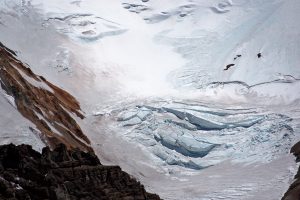
Who Was the First Person To Climb Aconcagua?
German geologist and explorer Paul Güssfeldt tried and failed to climb Aconcagua in 1883, reaching a site at around 6,500m/21,325ft. It wasn’t all in vain; Güssfeldt’s route forms the basis of modern-day attempts.
It wouldn’t be long before the mountain was conquered. British mountaineer Edward FitzGerald repeatedly tried to summit between December 1896 and February 1897 but never made it. In contrast, some of his support crew did.
The Swiss expedition guide Matthias Zurbriggen became the first person to summit Aconcagua on January 14, 1897. Trek companions Stuart Vines and Nicola Lanti repeated the feat on February 13. Most people take between 18 and 25 days to complete the route.
Other records include:
- Youngest successful climber: California’s Tyler Armstrong was nine when he summited on December 24, 2013.
- Oldest successful climber: Scott Lewis, who made the top on November 26, 2007, aged 87.
- Fastest male climb: Ecuadorian-Swiss Karl Egloff hit the summit in just 11 hours and 52 minutes in 2014.
- Fastest female ascent: Ecuadorean Daniela Sandoval completed the challenge in 20 hours and 17 minutes.
What Is the Best Route To Climb Aconcagua?
There are three main routes to the top of Aconcagua; two suitable for trekkers and one for climbers. Hikers need to be able to carry up to 20kg for 6-9 hours daily or hire porters to help carry personal kits.
The normal route is the most popular (17-21 days) and heads up the Horcones valley towards a base camp called Plaza de Mulas. This base has everything from showers to WiFi, making for a very comfortable acclimatisation point.
From here, teams need to carry all their supplies to three separate camps that mark the way to the summit. This final section takes about a week or more.
The Vacas Valley route (19-21 days) accesses the mountain from the northern side. Additionally, it’s also known as the Polish Glacier Traverse, the Upper Guanacos route, or the Ameghino Traverse. Hikers get close to the Polish Glacier, making it a beautiful trail.
This trek is longer than the normal route. Still, it follows the same pattern of a comfortable base camp and carrying food and equipment to higher campsites. It is considered better for acclimatisation because it takes longer to reach the higher bases. Some people ascend via the Vacas Valley and descend via the shorter normal route, helping those tired bones.
At the same time, for the normal route and Vacas Valley, excellent fitness, attitude, acclimatisation and clothing are required to reach the top, but not technical ice climbing skills.
Ice climbers usually take on the Polish Glacier, a demanding and technical climb to the summit. There is 1,200m (3,937ft) of ice climbing on summit day with possible deep snow and the ice walls reaching 60 degrees at points, with the descent via one of the trekking routes. This climb is for experienced ice climbers only.
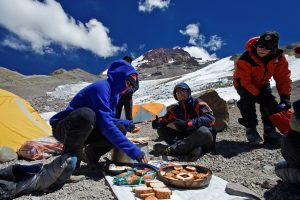
How Difficult Is It to Climb Mount Aconcagua?
Any attempt to climb Mount Aconcagua will be physically tiring and very hard.
People must acclimate slowly to the high altitude and be accustomed to walking for 7-9 hours on consecutive days with up to 25kg in their backpacks. Anyone taking an Aconcagua trip must be experienced trekking, camping, and carrying heavy loads.
There are many long ascents and descents and occasional river crossings. The weather can be challenging, with snow and freezing and powerful winds.
How Many People Climb Mount Aconcagua Every Year?
Around 3,500 people set off to climb Mount Aconcagua every year. Park estimates put the summit success rate at approximately 30-35%.
The most significant determining factor for reaching the summit is often the weather. Extreme winds can prevent many summit attempts, and many mountaineers cannot wait it out and run out of time to try for the top.
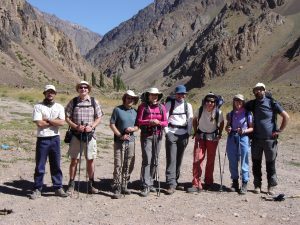
Is Mount Aconcagua One of the Seven Summits?
The Seven Summits is a trekking and climbing challenge to scale the highest mountain on each of the seven traditional continents.
Mount Aconcagua is the highest mountain in South America and the second highest of the Seven Summits after Mount Everest (8,848m/29,029ft). Here’s the Seven Summits list, from the highest mountain to the lowest.
- Mount Everest, Nepal and China, Asia: 8,848m/29,029ft
- Mount Aconcagua, Argentina, South America: 6,961m/22,824ft
- Denali, United States (Alaska), North America, 6,194m/20,322ft
- Kilimanjaro, Tanzania, Africa, 5,895m/19,341ft
- Mount Elbrus, Russia, Europe, 5,642m/18,510ft
- Mount Vinson, Antarctica, 4,892m/16,050ft
- Puncak Jaya, Indonesia, Oceania, 4,884m/16.024ft
There are manifold variations of this list, depending on the definition of what a continent is.
Facts About Mount Aconcagua
Mount Aconcagua is one of South America’s toughest challenges. Equally, the continent’s and the Americas’ highest peak is open to trekkers and climbers.
Without a doubt, the views on the walks and the overall experience of a big mountain expedition at high altitude make it unique, whether you reach the summit or not. With preparation and a can-do attitude, you could bag an iconic peak and a lifetime of memories.
Been inspired? Contact us for more.
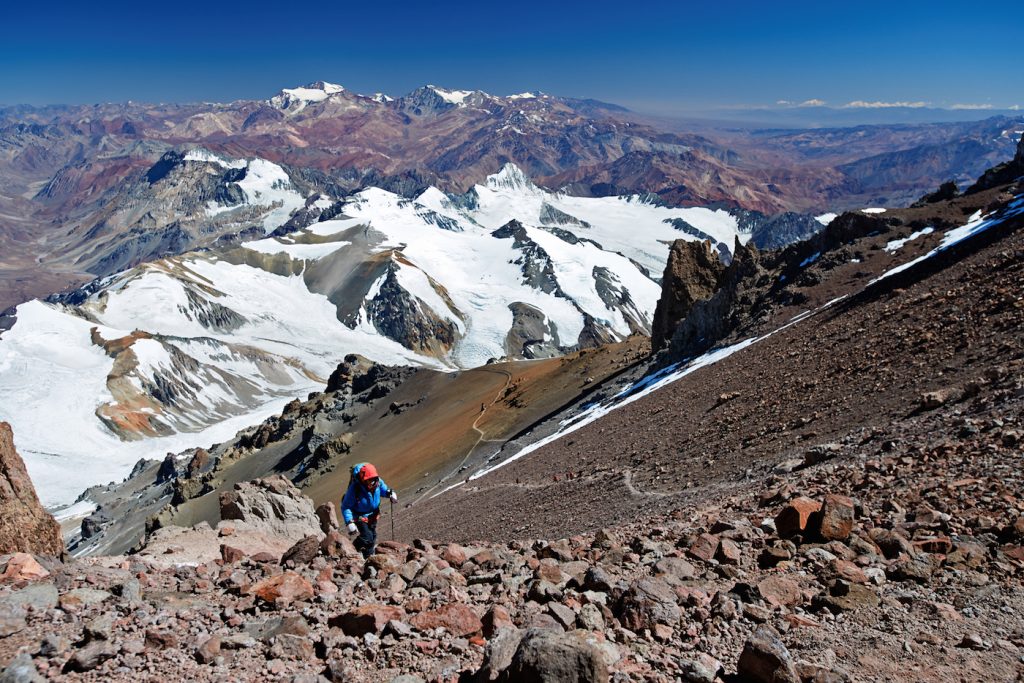


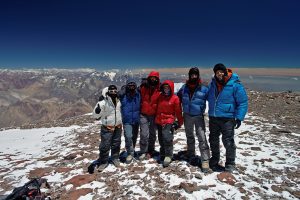
 a Group Tour
a Group Tour 